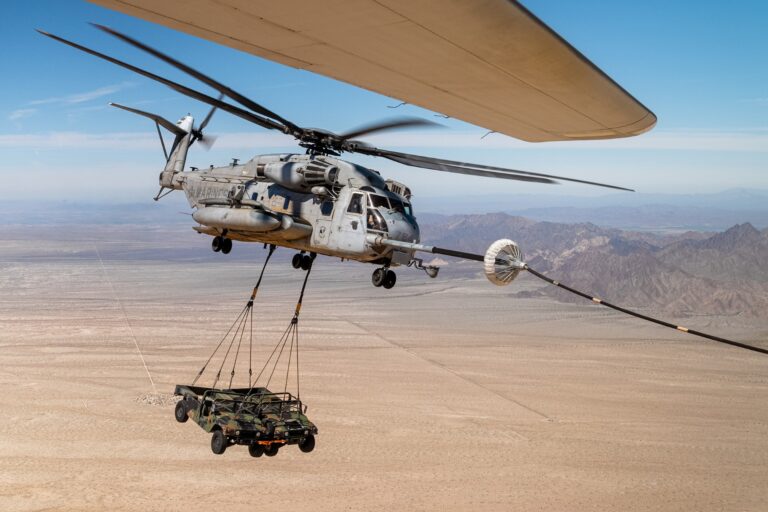Current Conditions:
The US Army’s transition to Multi-Domain Operations (MDO) as an operational concept is a significant departure from its predecessor of the previous two decades: counter-insurgency operations (COIN). Training for COIN and the deployments in support of the Global War on Terrorism eventually became steady-state operations based on a Gantt chart, providing predictable deployments, recovery, reset, training, and redeployment timelines. Further, introducing the latest combat technology to a brigade combat team (i.e., C-IED, base defense/tactical UAS, etc.) and executing new equipment fielding and training took a matter of weeks and often occurred in an intermediate staging or forward operating base. Within this semi-predictable environment, the transition from the Division Headquarters to the Brigade Combat Team as the unit of action and departure from maneuver-centric warfare created atrophy in headquarters above brigade because it limited their warfighting role and primarily relegated them to force providers. With Russia’s invasion of Ukraine and the People’s Republic of China (PRC) becoming a pacing threat to our nation, the current and future environment is now less predictable.
Desired Conditions:
To counter these strategic threats, TRADOC PAM 525-3-1, The US Army in Multi-Domain Operations 2028, states, “…Army forces [will] penetrate and dis-integrate enemy anti-access and area denial systems and exploit the resultant freedom of maneuver to achieve strategic objectives (win) and force a return to competition on favorable terms.” Under this relatively new operating concept, US Army Corps and Division headquarters take a more prominent warfighting role in achieving MDO’s theory of victory. To support this, the US Army is aggressively pursuing modernization capabilities to enhance MDO. According to Secretary Warmuth’s recent Congressional testimony, these capabilities include longer-range and persistent ISR, rapidly converging ground forces, improved long-range precision fires, protection, inter-operable and integrated communication, and sustainment of operations, specifically for independent maneuver.
Issue:
With the recent introduction of MDO as an operating concept, US Army Corps and Division headquarters must re-learn how to train for large-scale combat operations, account for emerging capabilities across all five domains, and simultaneously prepare for conflict with the people and equipment currently on hand.
Industry Opportunities:
Integrated Training at Echelon: Adopting MDO and reintroducing US Army Corps and Divisions as operational and tactical headquarters requires realistic combat training that integrates collective training from Corps Headquarters to squad formations. The US Army’s Synthetic Training Environment (STE) is a future capability (still in development) that, in the end state, provides a promising software engine to achieve this integrated collective training. However, the US Army’s STE is years off from achieving its goals. This provides opportunities for industry to capitalize on short and mid-term solutions for integrating existing systems and programs to enhance integrated training. Possible short and mid-term opportunities include leveraging advances in gaming, augmented reality, and artificial intelligence to integrate the US Army’s Warfighting Exercise Program and Combat Training Center rotations.
Accounting for Emerging Technologies: Until recently, US ground forces rarely looked up in the sky for any threats to its formation. Additionally, communications, navigation, and sustainment were given. This is no longer a luxury. Now and in the future, all formations must look at not only what is in front of them but also what is behind, above, below, and in spaces where they cannot be seen with the naked eye. Training for a five-domain environment is challenging, especially at brigade and below. A golden rule in training for combat is to train as you fight because it prevents wishing away problems soldiers will face in the future. Training scenarios must over-emphasize enemy overmatch capabilities to overcome this challenge, regardless of current or future capabilities. Creating training scenarios under these conditions forces leaders and industry to develop innovative solutions to contemporary problems.
Theory, History, Doctrine: Preparing today while understanding tomorrow. Industry can favor itself by learning from theory, history, and doctrine. Subject Matter Experts (SME) witnessing the US Army’s transition from Active Defense to AirLand Battle in 1982 can provide context, lessons learned, and techniques for training for an operating concept aggressively pursuing modernization capabilities. These SMEs saw first-hand how AirLand Battle, ultimately based on deep attack doctrine, trained for almost four years without the doctrine’s primary deep attack capability, the AH-64 Apache. They are experts on training today while understanding tomorrow’s capabilities.
Conclusion: Industry sits in a unique position because individual companies understand their products and services more deeply than anyone on active duty. This in-depth knowledge allows vendors who understand MDO to proactively create solutions for the Army/military using their technology, innovations, and partnerships. TMST consultants possess this expertise and in-depth knowledge, representing over six decades of experience in the US military, government, interagency, and international Affairs.
Jonathan “Jon” Graebener is a retired US Army Lieutenant Colonel who last served as a Senior Military Instructor at the US Army School of Advanced Military Studies. He is a graduate of both the Advanced Military Studies Program and the Advanced Strategic Leadership Studies program at the US Army School of Advanced Military Studies. He is a former Infantry Battalion Commander, Chief, Live-Fire Division at the Joint Readiness Training Center, and served in command and staff positions on five combat deployments.
